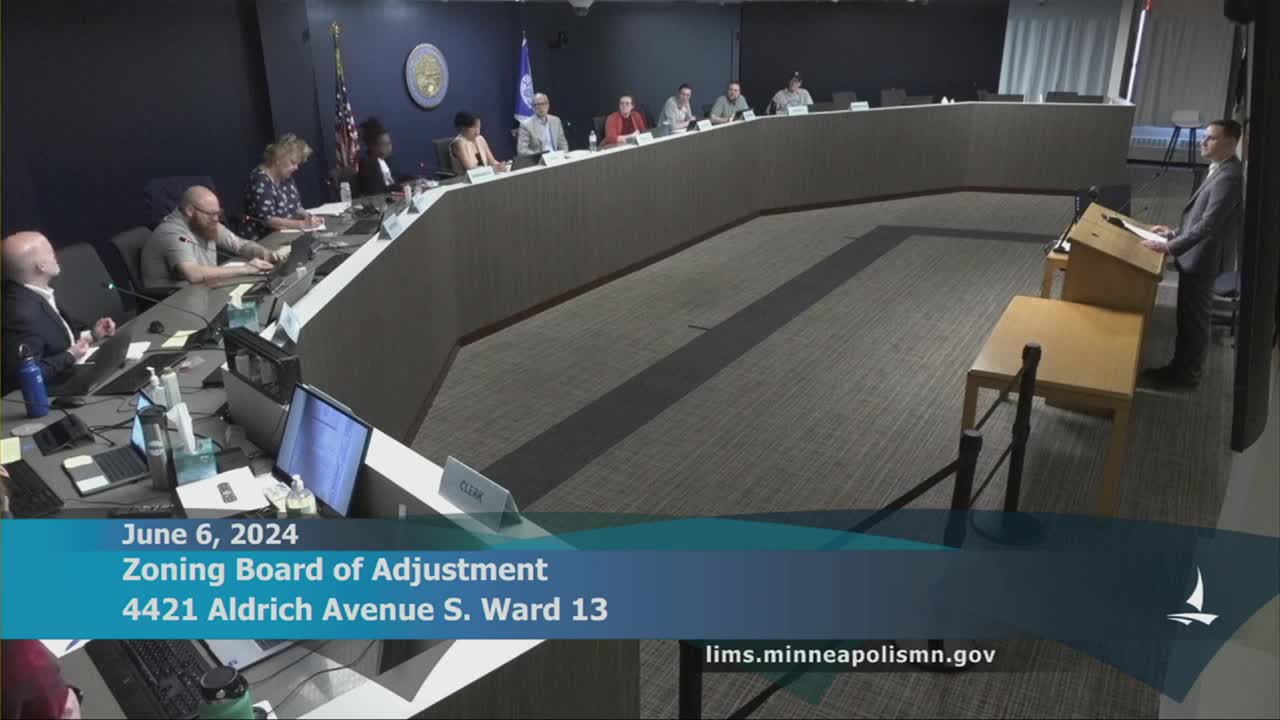Homeowners fight for garage approval amid zoning rule changes
June 01, 2024 | Minneapolis City, Hennepin County, Minnesota

This article was created by AI summarizing key points discussed. AI makes mistakes, so for full details and context, please refer to the video of the full meeting. Please report any errors so we can fix them. Report an error »

In a recent government meeting, discussions centered around changes to zoning regulations and their impact on local homeowners, particularly regarding the construction of accessory dwelling units and garages. The meeting highlighted the challenges faced by residents navigating these evolving policies.
One key speaker, Matt Moose, a Minneapolis homeowner, expressed frustration over a sudden change in zoning rules that occurred in July 2023, just months after he had begun planning a new two-stall garage to accommodate his family's needs. Moose detailed how he had worked closely with city officials to ensure his design complied with existing regulations, only to be blindsided by the new rules that halted his project. He emphasized the importance of timely communication from the city, stating that had he been informed of the impending changes, he could have submitted his permits before the deadline, allowing construction to proceed without delay.
The meeting also addressed broader policy considerations regarding the height and purpose of structures in residential areas. Officials discussed the rationale behind allowing taller accessory dwelling units, suggesting that such structures should primarily serve housing needs rather than merely function as garages or storage spaces. This reflects a growing trend in urban planning aimed at maximizing housing availability in densely populated areas.
As the public hearing progressed, Moose reiterated the significance of the garage project for his family's long-term plans in Minneapolis, underscoring that without approval, they might be forced to relocate. His testimony highlighted the emotional and practical stakes involved in local zoning decisions, as families strive to adapt their homes to better suit their needs amidst shifting regulations.
The meeting concluded with a call for further questions, indicating ongoing engagement with community members as they navigate these complex issues. The discussions underscore the delicate balance between regulatory frameworks and the needs of residents, a challenge that continues to evolve in urban environments.
One key speaker, Matt Moose, a Minneapolis homeowner, expressed frustration over a sudden change in zoning rules that occurred in July 2023, just months after he had begun planning a new two-stall garage to accommodate his family's needs. Moose detailed how he had worked closely with city officials to ensure his design complied with existing regulations, only to be blindsided by the new rules that halted his project. He emphasized the importance of timely communication from the city, stating that had he been informed of the impending changes, he could have submitted his permits before the deadline, allowing construction to proceed without delay.
The meeting also addressed broader policy considerations regarding the height and purpose of structures in residential areas. Officials discussed the rationale behind allowing taller accessory dwelling units, suggesting that such structures should primarily serve housing needs rather than merely function as garages or storage spaces. This reflects a growing trend in urban planning aimed at maximizing housing availability in densely populated areas.
As the public hearing progressed, Moose reiterated the significance of the garage project for his family's long-term plans in Minneapolis, underscoring that without approval, they might be forced to relocate. His testimony highlighted the emotional and practical stakes involved in local zoning decisions, as families strive to adapt their homes to better suit their needs amidst shifting regulations.
The meeting concluded with a call for further questions, indicating ongoing engagement with community members as they navigate these complex issues. The discussions underscore the delicate balance between regulatory frameworks and the needs of residents, a challenge that continues to evolve in urban environments.
View full meeting
This article is based on a recent meeting—watch the full video and explore the complete transcript for deeper insights into the discussion.
View full meeting
